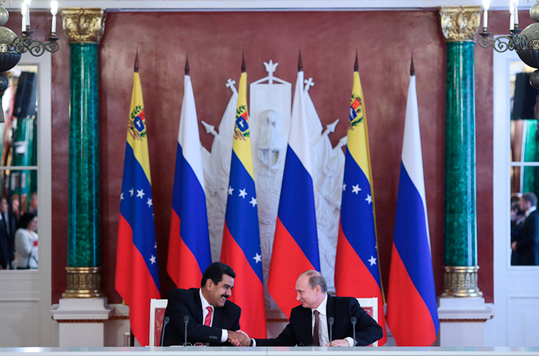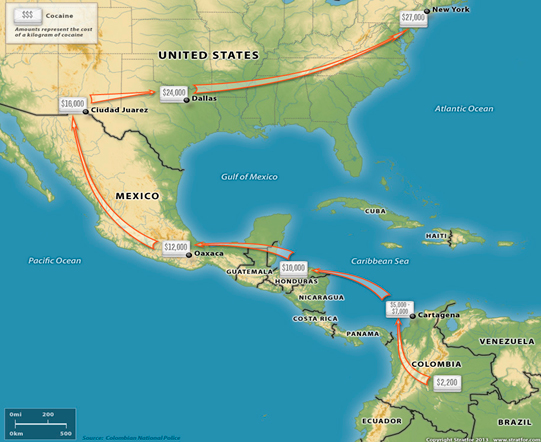Who’s deciding about fighting drugs?
In
Log in if you are already registered
As I have mentioned in the previous blog entry, US agricultural policy has impact on problem of creating narcotrafico in Latin America or in Afghanistan therefore dear readers should understand how this issue is built to understand ambivalent policy shaped around the world.
American agricultural policy linked with the Farm Bill from many years was donating the export of crop goods to countries like Mexico or Colombia which are main parts of chain or supply of production of cocaine. Therefore peasants in Latin America were loosing competition at free market linked with Free Trade Agreement where things from US are cheaper even at the local market. The paradox tackle the question should the fruits and vegetables from United States be cheaper than those produced in developing countries of Global South? This question arises a topic of subventions made by Federal Budget to hold a respiratory for farmers in US therefore no need of crops with beans or corn which cannot deliver conditions of fair salary for work of latin-american pesaints. The sad conclusion leads to increasing of scale of illegal crops used to be exported to US as cocaine and others. Despite the changing will of American legislative bodies which are keen to ban those subventions like US Congress and did that in the mid of June 2013 , there are still many regulations linked with FTA which are supporting to create unemployment amid simple farmers from Latin America which are forced to do the coca leaves activity. The conflict of interests is not based only on Farm Bill. The roots are based on the mechanisms of economical integration in the Western Hemisphere expressed by FTA or Plan Puebla-Panama etc..
This same policy let Coca Cola to import coca leaves to USA so the amount of exeptions with antidrug policy is plenty and those are maybe sometimes leading to liberal approach with results like in Afghanistan where American soldiers are grabbing for using opiates. More than 8 of troopers in Asia lost their life due to drugs addiction so as we can see it is looking deadly dangerous but maybe its affiliated with other disaster of US foreign policy called Plan Colombia which was assuming the promotion of conventional fruits and vegetables by supporting peasants by money subventions as it should be looking equal comparing to aid for US farmers. But not at all as those American money was taken by drug lords who prepared fake fields of crops with coffee or corn just to cover the real activity and support the process of money laundering where even global banks are involved.
Secondly to the problems are belonging such issues as unclear ties of drug lords for example from Mexico linked with special service from US. Those people were establishing and inventing the drug routes around Central America and had received special trainings from American army or civil US agencies so worth to point out the Sinaloa cartel and Zetas which are shaped by mexican ex-miltaries or paramilitares sponsored by US. For instance ‘founders of the Zetas drug gang learned special forces techniques at Ft. Bragg before waging a campaign of carnage’. Moreover one of the ‘Washington Times article theorizes that U.S. officials were actively aiding organizations such as the Sinaloa cartel with guns and immunity in an effort to stymie Los Zetas. That’s because, according to the piece, the powerful and brutal criminal Zetas syndicate has the potential to overthrow the government of Mexico — and might be planning to do so’ (Reports: CIA Working with Mexican Drug Cartels’) .
Source: Colombian police
Those challenges of fighting drugs are covering and justifying the Russian diagnosis of involvement in fighting drugs in the Latin America as there is opened training facility in Nicaragua Russia’s General Staff chief Col. Gen. Valery Gerasimov. training center for Nicaragua’s Ground Forces, which has been named after Marshal of the Soviet Union Georgy Zhukov. The first results were shown after capturing the transport of 1.2 tons of cocaine in a joint operation. The approach to the problem by Russian Federation is very serious as we can notice also by examples of domestic policies like punishing for lack of will to have rehab after abuse so there could be no suspicious accusations linked to cold war as those are sometimes made by US in relation to the Nixon antidrug policy in Latin America. Therefore the drug problem is global and Russia should support attempts of fighting with cartels also in Central and South America as its doing with Venezuela which wants to buy from Russia tanks T-72 B1, rocket launchers Igla, systems Antey 2500 and Smerch. The drug lords are supplied by heavy weapons so therefore a need of such contracts and smuggling is mostly going by small planes supported by narco ground forces therefore we should cross fingers for such contracts between Russia and Venezuela which were on the agenda of last meeting between Vladimir Putin and Nicolas Maduro in Moscow. As the example of drug lords gear I suggest to follow the pics bellow which are providing conclusion about necessary Russian engagement:

American M-16 used in Latin America
The global drug threat is a common problem for Russia and US therefore there should be no exceptions in the struggle against drugs because it is about safe future of young generations and healthy society therefore let us cross fingers for a brighter future of the global community.

Source: Venezuelan Ministry of Public Communication





